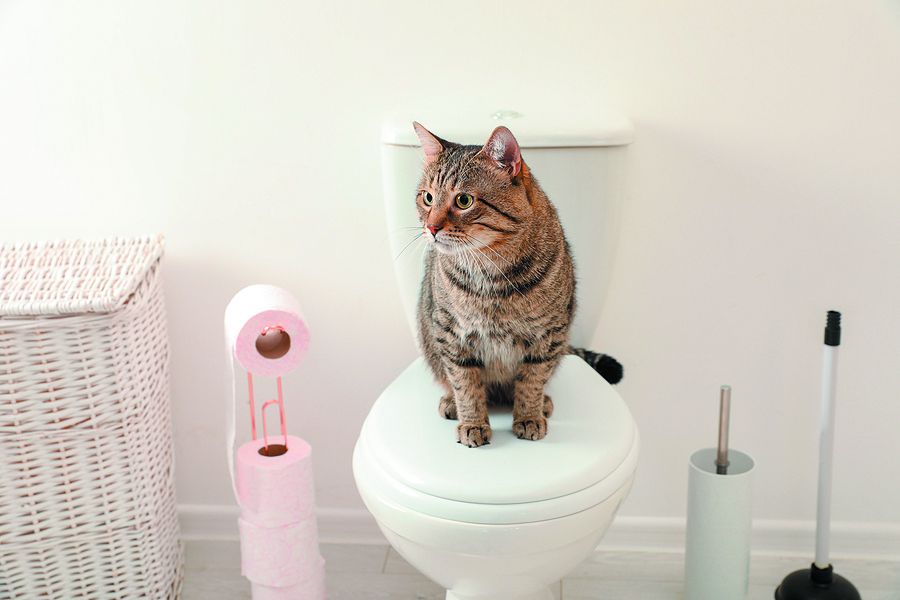Just how do you actually feel about How to Dispose of Cat Poop and Litter Without Plastic Bags?

Introduction
As cat proprietors, it's essential to be mindful of exactly how we deal with our feline close friends' waste. While it might seem convenient to purge feline poop down the toilet, this technique can have harmful consequences for both the setting and human health.
Alternatives to Flushing
Luckily, there are much safer and much more accountable ways to dispose of pet cat poop. Consider the complying with alternatives:
1. Scoop and Dispose in Trash
The most typical technique of disposing of feline poop is to scoop it into a biodegradable bag and toss it in the garbage. Be sure to utilize a devoted trash inside story and throw away the waste quickly.
2. Use Biodegradable Litter
Opt for naturally degradable cat litter made from products such as corn or wheat. These clutters are environmentally friendly and can be safely thrown away in the trash.
3. Bury in the Yard
If you have a backyard, think about hiding cat waste in a marked location away from veggie yards and water resources. Make certain to dig deep enough to avoid contamination of groundwater.
4. Mount a Pet Waste Disposal System
Buy a pet dog garbage disposal system especially made for pet cat waste. These systems utilize enzymes to break down the waste, minimizing smell and ecological influence.
Health and wellness Risks
Along with ecological concerns, flushing feline waste can likewise posture wellness threats to people. Feline feces may consist of Toxoplasma gondii, a bloodsucker that can trigger toxoplasmosis-- a potentially extreme health problem, particularly for expectant ladies and individuals with weakened body immune systems.
Environmental Impact
Flushing feline poop introduces harmful microorganisms and bloodsuckers into the water, positioning a substantial threat to water ecosystems. These pollutants can adversely impact marine life and concession water top quality.
Conclusion
Accountable animal possession expands past providing food and shelter-- it likewise includes appropriate waste monitoring. By avoiding purging pet cat poop down the toilet and selecting different disposal approaches, we can decrease our ecological impact and secure human health and wellness.
Why Can’t I Flush Cat Poop?
It Spreads a Parasite
Cats are frequently infected with a parasite called toxoplasma gondii. The parasite causes an infection called toxoplasmosis. It is usually harmless to cats. The parasite only uses cat poop as a host for its eggs. Otherwise, the cat’s immune system usually keeps the infection at low enough levels to maintain its own health. But it does not stop the develop of eggs. These eggs are tiny and surprisingly tough. They may survive for a year before they begin to grow. But that’s the problem.
Our wastewater system is not designed to deal with toxoplasmosis eggs. Instead, most eggs will flush from your toilet into sewers and wastewater management plants. After the sewage is treated for many other harmful things in it, it is typically released into local rivers, lakes, or oceans. Here, the toxoplasmosis eggs can find new hosts, including starfish, crabs, otters, and many other wildlife. For many, this is a significant risk to their health. Toxoplasmosis can also end up infecting water sources that are important for agriculture, which means our deer, pigs, and sheep can get infected too.
Is There Risk to Humans?
There can be a risk to human life from flushing cat poop down the toilet. If you do so, the parasites from your cat’s poop can end up in shellfish, game animals, or livestock. If this meat is then served raw or undercooked, the people who eat it can get sick.
In fact, according to the CDC, 40 million people in the United States are infected with toxoplasma gondii. They get it from exposure to infected seafood, or from some kind of cat poop contamination, like drinking from a stream that is contaminated or touching anything that has come into contact with cat poop. That includes just cleaning a cat litter box.
Most people who get infected with these parasites will not develop any symptoms. However, for pregnant women or for those with compromised immune systems, the parasite can cause severe health problems.
How to Handle Cat Poop
The best way to handle cat poop is actually to clean the box more often. The eggs that the parasite sheds will not become active until one to five days after the cat poops. That means that if you clean daily, you’re much less likely to come into direct contact with infectious eggs.
That said, always dispose of cat poop in the garbage and not down the toilet. Wash your hands before and after you clean the litter box, and bring the bag of poop right outside to your garbage bins.
https://trenchlesssolutionsusa.com/why-cant-i-flush-cat-poop/

I'm certainly very occupied with Don’t flush cat feces down the toilet and I hope you appreciated the new blog posting. Do you know about somebody who is occupied with the niche? Do not hesitate to promote it. I appreciate reading our article about Can You Flush Cat Poo or Litter Down the Toilet?.
Source This Article